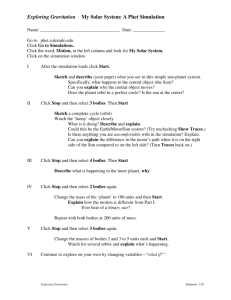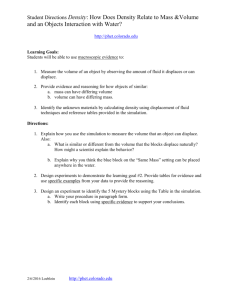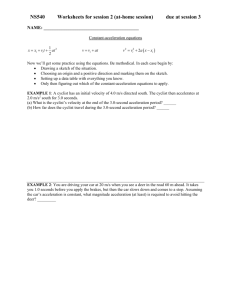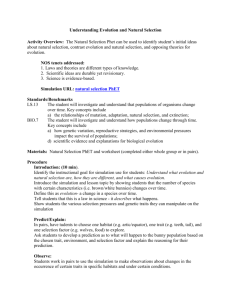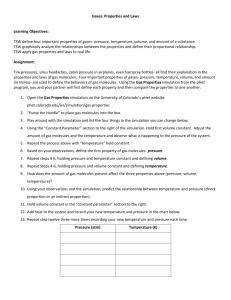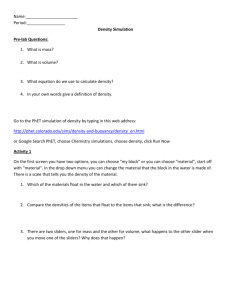Lesson Title: Natural Selection Subject: Middle School Biology
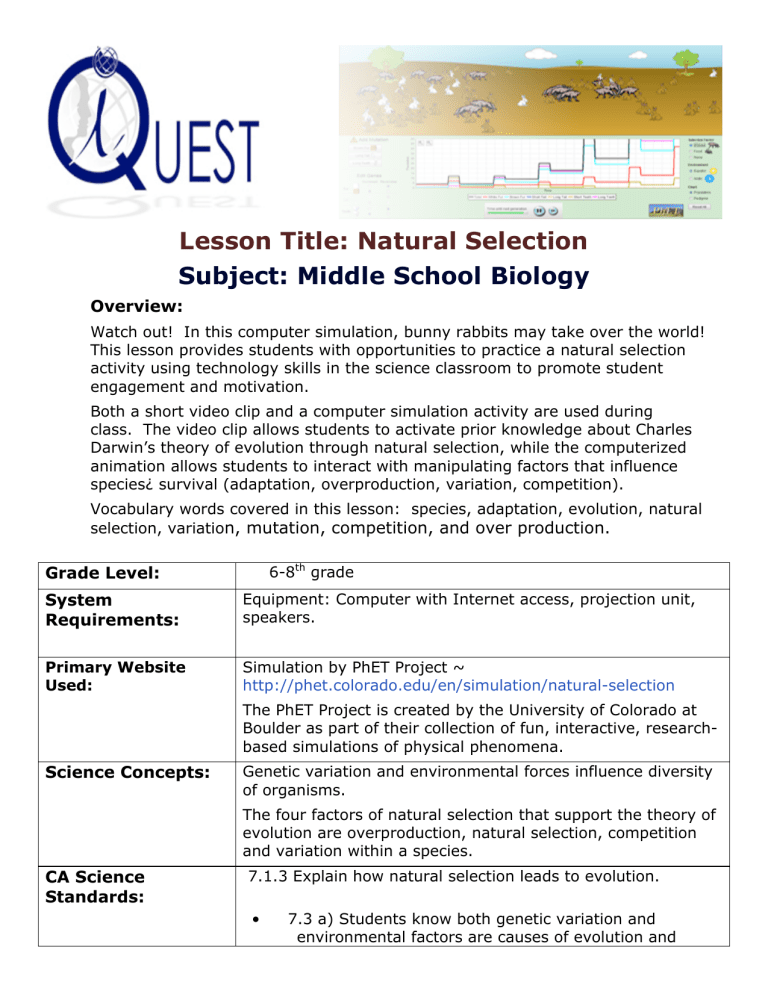
Lesson Title: Natural Selection
Subject: Middle School Biology
Overview:
Watch out! In this computer simulation, bunny rabbits may take over the world!
This lesson provides students with opportunities to practice a natural selection activity using technology skills in the science classroom to promote student engagement and motivation.
Both a short video clip and a computer simulation activity are used during class. The video clip allows students to activate prior knowledge about Charles
Darwin’s theory of evolution through natural selection, while the computerized animation allows students to interact with manipulating factors that influence species¿ survival (adaptation, overproduction, variation, competition).
Vocabulary words covered in this lesson: species, adaptation, evolution, natural selection, variatio n, mutation, competition, and over production.
Grade Level: 6-8 th grade
System
Requirements:
Primary Website
Used:
Equipment: Computer with Internet access, projection unit, speakers.
Simulation by PhET Project ~ http://phet.colorado.edu/en/simulation/natural-selection
The PhET Project is created by the University of Colorado at
Boulder as part of their collection of fun, interactive, researchbased simulations of physical phenomena.
Science Concepts: Genetic variation and environmental forces influence diversity of organisms.
CA Science
Standards:
The four factors of natural selection that support the theory of evolution are overproduction, natural selection, competition and variation within a species.
7.1.3 Explain how natural selection leads to evolution.
• 7.3 a) Students know both genetic variation and environmental factors are causes of evolution and
National Education
Technology
Standards for
Students (NETS*S)
( http://www.iste.o
rg )
Lesson Plan:
Teacher Prep Prior to Lesson:
Support Videos and
Visuals:
Student Activities &
Resources: diversity of organisms.
• 7.3.b Students know the reasoning used by Charles
Darwin in reaching his conclusion that natural selection is the mechanism of evolution.
Creativity and Innovation :
1.
Students demonstrate creative thinking, construct knowledge, and develop innovative products and processes using technology.
2.
Students: (c) use models and simulations to explore complex systems and issues.
3.
Research and Information Fluency: Students apply digital tools to gather, evaluate, and use information.
4.
Students: (d) process data and report results
Lesson Guide Jeff- put 6-5 Lesson Guide here with PDF and
WORD versions
Teacher Practice Activity-it is recommended the Teacher work through this practice of the Simulation Lesson in order to understand the Natural Selection simulation activity the students will do.
Jeff- put Teacher Practice Activity6-5 here with PDF and
WORD versions
Darwin Biography video (3.38 minutes): http://www.youtube.com/watch?v=xOl0tHVV6Ck&feature=rel ated
This 10-minute video is designed to explain some of the variations of Darwin’s natural selection work: http://www.youtube.com/watch?v=ZtZb6GZgniI
This 6-minute Humming Bird video is used with the Talley worksheet http://www.pbs.org/wgbh/evolution/library/11/2/quicktime/e_ s_4.html
Jeff- put Green Iguana Pix and Brown Iguana Pix here in PDF format.
Pre Learning Activity:
"Triple Threat" Vocabulary Worksheet Jeff- put Triple threat worksheet 6-5here with PDF and WORD versions
*Humming Bird Video: 6-min Video
Video Talley Sheet Jeff- put Tally sheet 6-5 here with PDF and
Teacher Authors
WORD versions
Simulation Lesson:
Worksheet ( PDF ) ( WORD ) for Nature Selection using the
Simulation found at: http://phet.colorado.edu/en/simulation/natural-selection
Jeffrey Collings, Debbie DeLucia, Michele Einspar, Cathy
Munson
